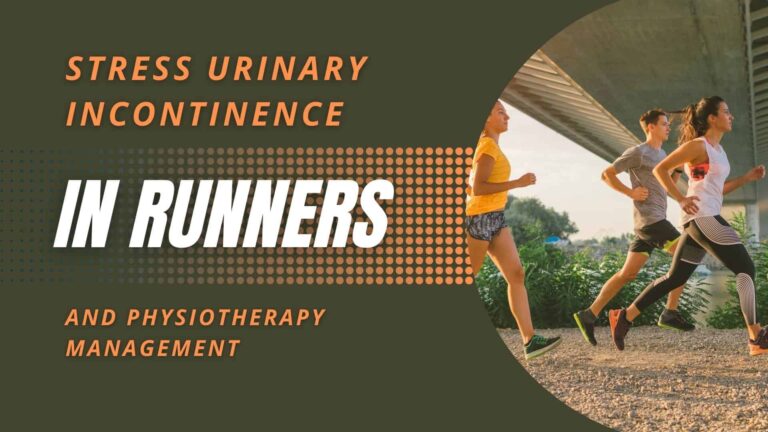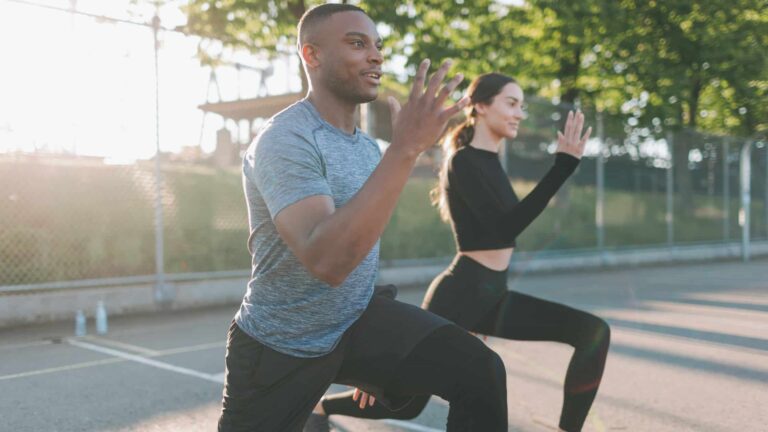Beyond Kegels: Holistic Approach to Pelvic Floor Strengthening
Have you ever felt the sudden urge to rush to the bathroom but couldn’t make it in time? You’re not alone. Pelvic floor issues affect millions, and they don’t discriminate. Whether you’re a new mom, an athlete, or simply getting older, your pelvic health is important. It’s time we talk about it openly and explore solutions beyond the basics of the Kegel exercises.
Your pelvic floor muscles are a crucial ingredient to your body’s health. They support your bladder, rectum, and uterus, which are necessary for bladder and bowel control and sexual function. When these muscles weaken, it can lead to urinary incontinence, pelvic pain, or even pelvic organ prolapse.
Here’s the surprising Statistics:
About 25% of women and 10% of men experience some form of pelvic floor dysfunction. In older adults over 65, this number jumps to nearly 50%! That’s a staggering number, isn’t it?
While Kegel exercises have been the go-to for pelvic health, they’re not perfect for everyone. In fact, up to 50% of women do these exercises incorrectly when following instructions. It’s clear that we need a better approach beyond Kegels to pelvic floor strength. This article will explore new ways, techniques, and lifestyle changes that can really improve your pelvic floor health and quality of life.
Key Takeaways
- Pelvic floor muscles are crucial for overall body function and well-being.
- Traditional Kegel exercises have limitations and may not be suitable for everyone.
- A comprehensive approach to pelvic floor strength training is more effective than Kegels alone.
- Dynamic strength training engages multiple muscle groups for better pelvic stability.
- Resistance training can enhance the effectiveness of pelvic floor exercises.
- Incorporating pelvic floor exercises into daily activities is beneficial.
- Proper breathing and posture significantly influence pelvic floor function.
- Mindful movement practices like tai chi, qigong, yoga, and Pilates benefit pelvic health.
- Lifestyle factors such as hydration, nutrition, and stress management impact pelvic floor health.
- Professional guidance from a pelvic floor physical therapist is important for personalized pelvic floor physiotherapy treatment.
Understanding the importance of pelvic floor muscles
The pelvic floor muscles are necessary for our body’s overall function and well-being, yet they often go unnoticed until problems arise. These hidden heroes form a supportive structure at the base of the pelvis, holding vital organs in place and controlling bladder and bowel movements.
For both men and women, maintaining strong pelvic floor muscles is essential for preventing pelvic floor dysfunction. While Kegel exercises are commonly known for targeting these muscles, there’s much more to pelvic floor health than just doing kegels. Understanding the importance of these muscles is the first step towards a holistic approach to pelvic floor strength and function, which can significantly improve quality of life and prevent future pelvic health complications.

The limitations of traditional kegel exercises
Kegel exercises are often the first thing people think of for any pelvic floor issues. But they’re not a single fix for everyone. In fact, for some, Kegels might even make pelvic problems worse.
One big issue with Kegels is muscle isolation. Many find it hard to work the right muscles without appropriate help. This can result in exercises or workouts that don’t help or even hurt other muscles.
Kegels are usually used to tighten the pelvic floor muscles. But what if they’re already too tight? In these cases, Kegels could make things worse.
Another problem is that Kegels don’t tackle the real causes of pelvic problems. Issues like incorrect postures, muscle imbalances, or tension in other areas of the muscles can also play a significant role. Kegels can’t fix these deep-seated problems on their own.
To summarize the limitations of kegel exercises
- Kegels may not address other muscle imbalances
- They can be ineffective for tight pelvic floor muscles
- Proper muscle isolation is challenging without guidance
- Underlying causes often require additional treatment
Kegels have their role in pelvic health, but we must understand these limitations. A complete approach that looks at your specific pelvic health needs and the root cause of your problems is often needed for real relief.
“One out of four women reports having a pelvic floor disorder in her lifetime. For many, a comprehensive approach beyond Kegels is necessary for effective treatment.”

A comprehensive approach to pelvic floor strength training beyond Kegels
The approach to pelvic floor strength training goes far beyond the traditional Kegel exercises that many people are familiar with. While Kegels can be beneficial, they’re just one piece of the puzzle in maintaining a healthy and strong pelvic floor muscle function. There are various other aspects to a well-rounded pelvic floor strengthening program.
The pelvic floor: More than just a muscle
Your pelvic floor has a complex network of muscles, tissues, and nerves that support vital organs like your bladder, uterus (in women), and rectum. Muscle training is not just about squeezing the pelvic floor muscle. It’s about relaxing, coordination, balance, and overall body awareness. Understanding its complexity is essential for developing an effective yet practical approach to maintaining better pelvic floor health.
Dynamic strength training
While Kegel exercises focus on isolated contractions, dynamic strength training engages multiple muscle groups simultaneously, providing a more functional approach to pelvic floor health. Dynamic exercises target the pelvic diaphragm and strengthen the surrounding muscles in the hips, glutes, and other core muscles. This integrated approach improves overall pelvic stability and function.
For example, a proper squat engages the pelvic floor muscles throughout the movement. As you lower into the squat, the pelvic muscles naturally lengthen and relax. When you rise, they contract and lift. This dynamic action helps improve muscle coordination and strength in a way that mimics real-life movements.
Incorporating resistance training for enhanced results
Resistance training in pelvic floor muscle health can significantly enhance their effectiveness. This approach involves using tools like free weights, resistance bands, vaginal weights, or biofeedback devices to provide progressive resistance as the muscles contract. This targeted approach can lead to faster muscle strength and control improvements, potentially accelerating your progress in managing pelvic floor dysfunction.

Incorporating pelvic floor exercises into daily activites
Incorporating pelvic floor exercises into daily activities is an effective way to strengthen these important muscles without dedicating extra time to a separate workout routine. You can practice pelvic floor exercises while performing everyday tasks such as waiting in line, sitting at your desk, or commuting.
You can also integrate these exercises into other physical activities, such as contracting the pelvic floor muscles as you lift weights or rise from a sitting position. Diaphragmatic breathing exercises, which can be done while stretching or practicing yoga, help coordinate your pelvic floor with your breath.
Remember, the key is to make these exercises a natural part of your daily life rather than viewing them as a separate, time-consuming task.
Related exercises you may be interested in Top 5 Effective Pelvic Floor Exercises for Weak Pelvic Floor in Supine Position
The breath-posture connection
Breathing and posture significantly influence pelvic floor function. Diaphragmatic breathing, also known as belly breathing, creates a natural rhythm of contraction and relaxation in the pelvic floor muscles. As you inhale deeply, your diaphragm descends, gently stretching the pelvic floor. On exhalation, the pelvic floor naturally lifts, causing tightness.
Proper posture also ensures optimal spine and pelvis alignment, allowing the pelvic floor muscles to function efficiently. Poor postures, such as excessive anterior pelvic tilt or posterior pelvic tilt (slouching), can lead to chronic tension or weakness in these muscles. Practicing good posture intermittently throughout the day and doing targeted exercises to improve spinal alignment can significantly enhance pelvic floor health.

Mindful movements for pelvic health
Mindful movement practices like tai chi, qigong, and yoga offer comprehensive approaches to pelvic health that go beyond traditional Kegel exercises. These practices integrate physical movement, breath work, and mental focus to strengthen and balance the entire pelvic region.
Tai Chi for pelvic health
Tai chi, often described as “meditation in motion,” can greatly benefit pelvic floor health. Its slow, controlled movements and emphasis on proper posture help improve overall body awareness and muscle coordination.
The gentle, flowing tai chi movements also functionally engage the pelvic floor muscles, encouraging them to work harmoniously with other muscle groups.
Qi-gong for pelvic strength
Qigong exercise practices have shown promising results for improving pelvic muscle function. Benefits of qigong for pelvic health include enhancing pelvic floor muscle strength and endurance, improving urine control, reducing symptoms of incontinence, and promoting overall pelvic stability through specific movements.
Qigong exercises often incorporate pelvic tilts, hip rotations, and breathing techniques that target the pelvic region. These movements can help activate and strengthen the pelvic floor muscles gently and sustainably.
Yoga
Yoga practice offers several benefits for pelvic health. It helps increase body awareness and the mind-body connection. It also helps stretch and strengthen muscles in the pelvic region, hips, and core. Yoga facilitates proper posture and alignment for pelvic function and incorporates breathwork that coordinates with pelvic floor engagement.
Specific yoga poses, such as Happy Baby and Malasana (squat pose), can help stretch and strengthen the pelvic muscles. These practices also highlight the connection between the diaphragm and pelvic floor, promoting coordinated movement and breath.
Pilates
Pilates exercises, particularly those focusing on core strength and pelvic stability, can enhance pelvic muscle function. The emphasis on precise, controlled movements in Pilates helps develop better muscle coordination and strength in the entire pelvic region.
The importance of mindfulness
Incorporating mindfulness practice brings conscious attention to the pelvic area during movement and develops a better understanding of the pelvic floor muscles. This helps with learning to engage and relax these muscles appropriately and reduce tension and holding patterns in the pelvic region. Mindful movement allows individuals to check in with their bodies and move in ways that lower stress, release energy, and improve the mind-body connection.

Beyond Exercises: Other lifestyle factors
A comprehensive approach to pelvic floor health extends beyond kegels or exercise to include various lifestyle factors.
- Proper hydration: Drink adequate water daily for healthy bladder and bowel function.
- Balanced nutrition: Eat a diet rich in fruits, vegetables, whole grains, and lean proteins.
- Fiber intake: Consume high-fiber foods to prevent constipation and reduce straining.
- Avoid bladder irritants: Limit caffeine, chocolates, alcohol, and spicy foods.
- Maintain a healthy weight: It reduces excess pressure on pelvic floor muscles.
- Proper bathroom habits: Don’t hold urine or strain during bowel movements.
- Stress management: Practice relaxation techniques to reduce pelvic tension.
- Appropriate footwear: Wear shoes with moderate heel height for better pelvic alignment.
- Quit smoking: this helps improve overall pelvic health.
- Adequate sleep: Prioritize quality sleep for muscle recovery and function.

The importance of professional guidance
While many exercises can be performed at home, working with a pelvic floor physical therapist offers many advantages. These physical therapy specialists can thoroughly assess your pelvic muscle function, identifying any specific weaknesses or muscle and joint imbalances. They can then create a personalized treatment plan that addresses your specific needs.
A physical therapist can also teach proper exercise techniques, ensuring you engage the correct muscles and avoid potentially harmful practices. They may use tools like resistance training, electrical stimulation and biofeedback to help you better understand and control your pelvic floor muscles.
By incorporating these comprehensive approaches to pelvic health, you can develop a well-rounded strategy for pelvic floor muscle health beyond basic Kegel exercises, improving function and quality of life.
But remember, it’s not just about doing Kegels. A good physiotherapist will show you many exercises and techniques that fit you. With their help, you’ll get better pelvic floor health and feel better overall.
“Professional guidance is key to achieving optimal pelvic floor physical health and preventing further complications.”

Beyond Kegels: Embrace the Holistic Path to Pelvic Health
Pelvic floor training goes far beyond traditional Kegel exercises. A comprehensive approach to pelvic floor muscle health encompasses various strategies, from dynamic strength training and mindful movement practices to lifestyle modifications and resistance training.
By integrating these diverse methods, you can achieve more lasting improvements in pelvic function. This holistic approach recognizes that the pelvic diaphragm doesn’t operate in isolation but as part of an interconnected system involving your core strength, hips, and overall posture.
Remember, everyone’s pelvic health journey is unique. What works best for you may be a combination of different techniques and lifestyle changes. It’s essential to listen to your body and, when necessary, seek guidance from pelvic health physiotherapists who can provide personalized advice and treatment plans.
By embracing these comprehensive approaches, you invest in more than just pelvic floor strength. You’re paving the way for improved bladder and bowel control, enhanced sexual health, better core stability, and an overall higher quality of life.
The journey beyond Kegels opens up a world of possibilities for pelvic health, empowering you to take control of your well-being in ways you might not have imagined before.

Cynthia Pathipati – Registered Physiotherapist
Cynthia Pathipati completed her bachelor’s in physiotherapy and is a qualified Registered Physiotherapist in good standing with the College of Physiotherapists of BC with more than 15 yrs of experience. She has Post-Graduate Credentials and Certifications as well as extensive knowledge experience in treating pelvic floor, orthopedic, neurological, vestibular and pain conditions.







